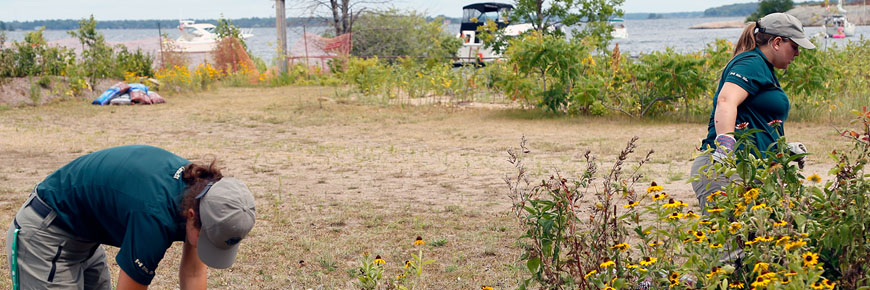
Restoring shoreline habitat in Georgian Bay
Small deeds give way to conservation wins for wildlife at Georgian Bay Islands National Park.
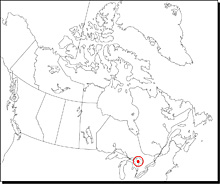
Two Map Turtles lounge on blocks, basking in the late-June sun just off Beausoleil Island. Nearby, Monarch Butterflies flirt with milkweed and kingfishers dart above.
Within sight of the main dock at Cedar Spring, furrows in the sandy bank are sure signs of turtle nests. Nature’s rituals in this area of Georgian Bay Islands National Park are being helped by Parks Canada conservation efforts to reclaim more areas for wildlife.
“Spotting these Northern Map Turtles, the nests, and Monarch Butterflies in this recovered area tells me that we have a conservation win here,” exclaims Andrew Promaine, the Resource Conservation Manager spearheading the project.
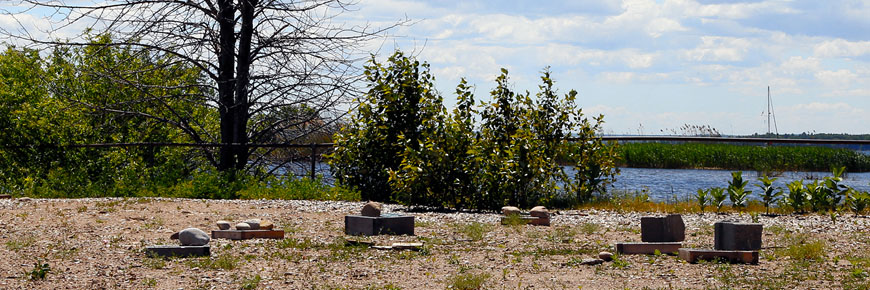
Parks Canada actively works with partners to monitor and restore ecosystems, protect species at risk, and expand the knowledge of biodiversity and climate change.
Up until recently, this spot (known as the Cruiser Dock) was a large open area with a shoreline retaining wall that acted as a barrier for turtles and other reptiles. Although the sandy soil seemed perfect for turtle nests, there was no easy way for them to get there from the adjacent wetland and bay.
The nearby land also lacked quality habitat for bees, insects, and butterflies. Parks Canada saw potential to restore the shoreline and reached out to the Georgian Bay Biosphere Reserve and the YMCA Junior Naturalists for some serious conservation sweat equity.
Six of the eight turtle species found in Ontario are Species at Risk and call Georgian Bay Islands National Park home: Blanding’s, Eastern Musk, Spotted, Snapping, Wood, and Northern Map Turtle. Northern Map Turtles: Loss of shoreline habitat, tainted food supply, and pet trade are all threats. Suitable basking sites and exposure to the sun for part of the day are important for the Map Turtle’s health. The Monarch Butterfly is endangered according to the Committee on the Status of Endangered Wildlife in Canada. Southern Ontario is an important Canadian habitat.
Did you know?
A habitat transformed
Three years and many blisters later, you will find a rejuvenated habitat on the eastern shores of Beausoleil Island, Georgian Bay Island’s largest and most visited island.
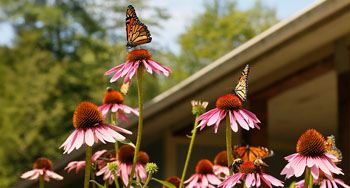
The bricks that once formed part of a retaining wall have been reconfigured to create both erosional control and turtle ecopassages to ensure easy access from the lake to the upper gravel nesting sites.
Also, careful landscaping now encourages species like milkweed, vital for the survival of the endangered Monarch Butterfly. Native gardens were planted and now attract a variety of pollinators such as bees.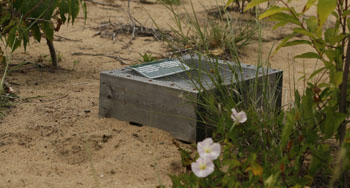
More living space for wildlife
Within this largest grouping of fresh water islands in the world, Georgian Bay Islands National Park is a haven for plant and animal life that can be appreciated by visitors and nature lovers alike.
For the hundreds of different species that call this biosphere reserve home, having as much liveable space as possible increases chances of survival and the ability to adapt to changing environmental conditions caused by climate change.
"Conservation interventions, both big and small, help to expand habitats that can support a variety of wildlife. This project is also part of a park-wide effort to recover species that are declining such as the Monarch Butterfly or threatened like the Northern Map Turtle. And in the big picture, thriving and diverse habitats are the foundation for a healthy ecosystem."
If the two basking Map Turtles could talk, they might agree with Andrew Promaine that this conservation effort is worth celebrating.
- Date modified :